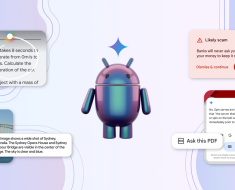In India and Indonesia, dead leaders are rising to throw their support behind their political successors; rapper Eminem is endorsing opposition parties in South Africa; and in the United States, President Biden is telling voters in New Hampshire to stay home. All of these things “happened”–but none of them are real. The generative AI revolution is here, and it’s coming for your elections. Welcome to the future, welcome to 2024.
For the very first time, the widespread availability of generative AI is going to clash head-on with political campaigns and elections. 2024 is already an unprecedented year for democracy: More than 2 billion people—the largest number ever—will vote in national, local, and regional elections in over 60 countries.
The global electorate now has to contend with this new tech. Deepfakes can be used for everything from sabotage to satire to the seemingly mundane: Already, we’ve seen AI chatbots write speeches and answer questions about a candidate’s policy. But we’ve also seen AI used to humiliate female politicians and make world leaders appear to promote the joys of passive-income scams. AI has been used to deploy bots and even tailor automated texts to voters.
Experts know that generative AI is poised to drastically change the information landscape, but we’re still learning how exactly that will happen. Problems that have long plagued tech platforms—like mis- and disinformation, scammy or hateful content—are likely to be amplified, despite the guardrails that companies say they’ve put in place.
So, in order to get a real sense of how generative AI is entering and changing the political and information landscape, we’re tracking it, all over the world, for the rest of the year.
Here’s what we’re doing:
The list and map you see here will be continuously updated throughout 2024. In the map, you’ll be able to see each country where we’ve identified a use of generative AI in its elections, and how many times. On the cards, you’ll be able to get more information about each specific instance, including when it happened and what it was. In addition to the information you see on each example, we will also be keeping track of the companies, tools, and platforms involved.





